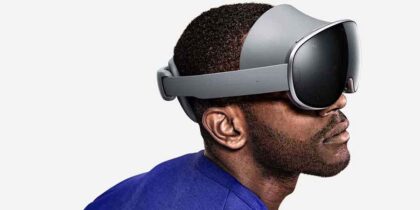The traditional shopping experience is growing more complex, thanks to the proliferation of digital customer touch points that yield an unprecedented level of customer- and product-specific data. Retailers that analyze this information to understand consumer shopping behavior in the increasingly interconnected world can more expertly address their customers’ shifting expectations.
Omnichannel retailing is blending online and offline experiences more than ever before, a move that has conditioned shoppers to expect to seamlessly “channel hop” across a brand throughout their path to purchase. With more customer touch points at their customers’ disposal, retailers have a plethora of information about how their consumers shop, and the patterns and rationale behind their decisions. The key to success is to apply consumer buying habits data to processes that intimately engage with and empower shoppers, streamline the overall experience, encourage repeat visits and drive sales. These efforts are commonly defined as the “three Rs of retail.”
1. Research: Consumers’ intensifying love affair with digital technology, along with the increasing volume of available information flowing through these devices, has undoubtedly upped the ante when it comes to researching their purchase decisions — a key reason why shoppers are often more informed than store associates when entering a retail location. Consumers are so attuned to doing their homework prior to making a purchase that analysts expected 64 percent of consumers to research merchandise and retailers before they made an in-store purchase in 2015, a jump from 49 percent in 2014, according to “On the Couch: Researching Consumer Shopping Behavior,” a report from Deloitte University. This trend is especially evident across the electronics (62 percent) and home furnishings (59 percent) categories, where destination shoppers outnumber those who merely browse in store before deciding what to buy, from Deloitte’s report “Navigating the New Digital Divide: Capitalizing on Digital Influence in Retail.”
By analyzing their consumers’ most-accessed information and product details, retailers can more expertly deliver relevant information that drives shoppers to their brand. This includes enabling consumers to use personal digital touch points to access inventory levels and available merchandise at their desired locations, store layouts and even access to their preferred store’s direct telephone number. More specifically, the adoption of local inventory ads (LIAs), which can be targeted to customers searching for a specific product — and exactly which store carries it — as well as store-specific information, including hours and directions, as summarized in Google’s report “Omnichannel Shoppers: An Emerging Retail Reality.”
2. Recommendations: Shopping has always been a social activity, one where shoppers often rely on the advice of friends or family before making a purchase. Add the power of digital solutions and shoppers’ social activities are taking a new turn. Similar to traditional print and broadcast advertising, however, retailer-sponsored content, including advertisements, user guides and retailer blogs, are losing their edge in the omnichannel experience. The predominant influencers of purchase decisions are now user-generated content and reviews, or recommendations. Recommendations are so prevalent that 81 percent of these digital suggestions play a major role in purchase decisions. Meanwhile, 61 percent of social media-based recommendations alone influence shopper decisions, according to Deloitte’s report “Digital Democracy Survey: A Multi-Generational View of Consumer Technology, Media and Telecom Trends.”
While user-generated content isn’t always positive, retailers must learn how to use this information to maintain a connection with shoppers throughout the path to purchase. That said, some brands feature locations on their sites that encourage customer discussion and feedback. Another option is to analyze customers’ on-site browsing habits and social graph data to make tailored product recommendations. In fact, 45 percent of online shoppers are more likely to shop on a site that offers personalized recommendations, according to an infographic from Invesp.
3. Returns: Returns are an unavoidable cost of doing business. Returns stem from customer dissatisfaction, a damaged product or poor product evaluation either during or post-purchase. As omnichannel retailing heats up, it is imperative to streamline the returns process. For starters, retailers must establish transparent returns policies that transcend channels, making it seamless for shoppers to get rid of unwanted merchandise. While unlimited return windows can be unrealistic, policies should support realistic, generous time frames that give shoppers the opportunity to return merchandise in their preferred channel. Meanwhile, they should integrate returns management systems enterprise-wide to further optimize the process. Those brands that offer the most user-friendly returns processes are positively differentiating themselves in the marketplace.
Omnichannel has paved the way for many more competitors in the retail landscape, but it’s the companies that present a user-friendly path to purchase that will succeed. Brands focusing on the three Rs — research, recommendations and returns — will not only drive sales but drive the loyalty needed for longevity in the industry.
Learn more about retail technology solutions that can give your business an edge with customers.








